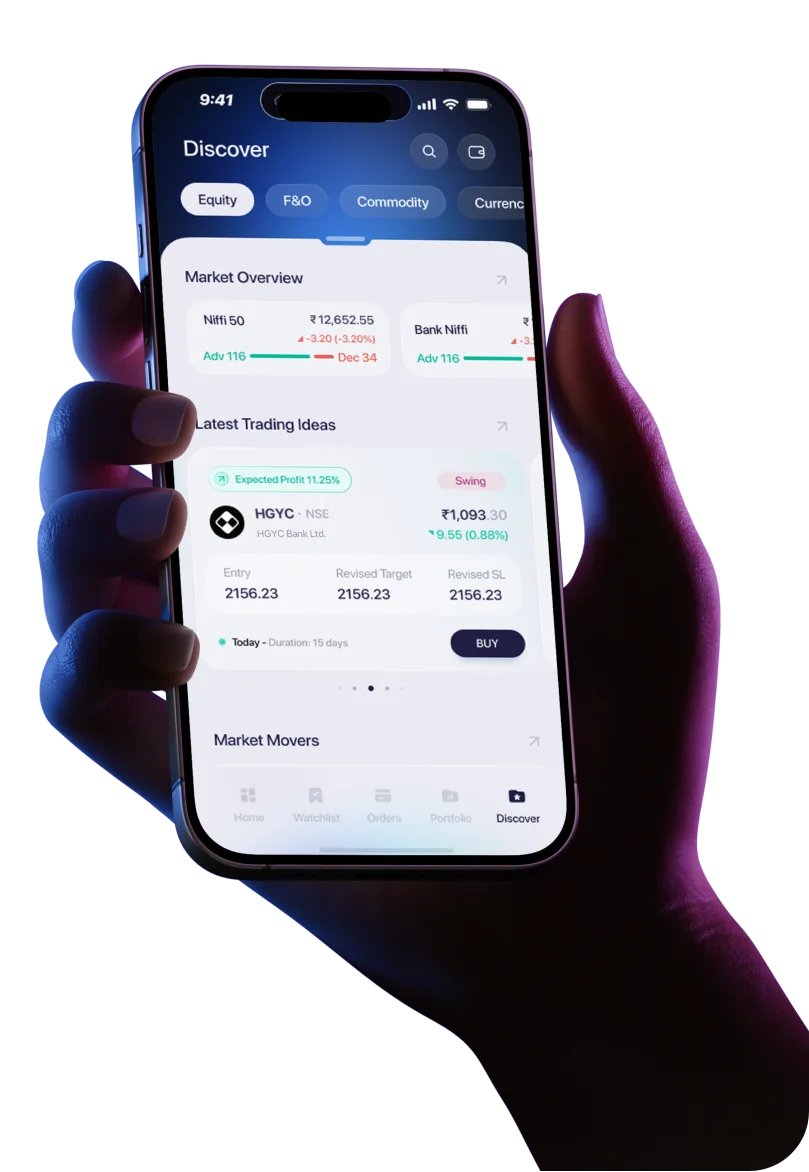In this article, we will discuss
- Understanding Demat Accounts
- Benefits of Demat Account for Long-term Investors
- Tax Benefits of Maintaining a Trading Account
- Choosing the Right Trading Account
- Comparison of Different trading accounts Available in the Market
- Steps to Open a Trading
- Tips for Maintaining a Trading
Maintaining a demat is essential for investors, particularly those who engage in long-term investment. It provides a convenient and secure way to buy, sell, and hold securities, eliminating the need for physical certificates and reducing the risk of loss or damage. Moreover, it allows investors to track their investment performance easily, access timely updates and notifications, and simplify the tax reporting process.
This article will delve into the importance of maintaining a demat account for long-term investors, highlighting its benefits, tax advantages, and the steps to open and maintain one.
Understanding Demat Accounts
A demat account is an electronic account allowing investors to hold and trade securities paperless. It serves as a digital repository for financial instruments like stocks, bonds, mutual funds, government securities, and exchange-traded funds. It eliminates the need for physical share certificates, making it more convenient and secure for investors.
How Do Demat Accounts Work?
When an investor opens a account, they are issued a unique demat account number (DP ID) and client ID. The account is linked to the investor's trading account, allowing them to buy and sell securities electronically. When an investor purchases securities, they are credited to their account; when they sell securities, they are debited from their account.
Types of Securities That Can Be Held in a Demat Account
A demat account can hold various types of securities, including equity shares, preference shares, debentures, bonds, mutual fund units, government securities, and exchange-traded funds (ETFs). This gives investors a diverse portfolio of financial instruments essential for long-term investment.
Advantages of Demat Accounts
Demat accounts offer several advantages to investors, including:- Convenience: They eliminate the need for physical share certificates, making it more convenient and hassle-free for investors to trade securities.
- Safety: accounts reduce the risk of loss or theft of physical share certificates, as they are securely held in electronic format.
- Cost-effective: These accounts eliminate the need for stamp duty, handling charges, and other expenses associated with physical share certificates. This makes transactions more cost-effective for investors.
- Timely updates and notifications: Demat provide investors with timely updates and notifications regarding their holdings, including dividend announcements, corporate actions, and changes in share prices.
- Easy tracking of investment performance: These accounts make it easy for investors to track their Long term investment performance, as they can access their portfolio details and transaction history in real-time.
Benefits of Demat Account for Long-term Investors
-
Safety and Convenience of Demat Accounts
These accounts provide a safe and convenient way for long-term investors to hold and trade securities. It eliminates the need for physical share certificates, which can be lost, stolen, or damaged. With a demat account, investors can access their holdings online and trade securities with just a few clicks from the comfort of their homes.
-
Cost-effective Transactions
These accounts eliminate the need for physical share certificates, which can incur expenses such as handling charges, stamp duty, and courier charges. This makes transactions more cost-effective for long-term investors, who only pay a small fee for each transaction.
-
Timely Updates and Notifications
Investors who use trading accounts receive timely information and alerts about their holdings, such as updates on dividend announcements, corporate developments, and price changes for shares. This helps investors stay informed and make informed decisions about their investments.
-
Reduced Paperwork
Physical share certificates are no longer required with trading accounts, reducing the amount of paperwork produced. With a trading account, investors can access all their holdings online, reducing the amount of paperwork and making it easier to manage their investments.
-
Ease of Tracking Investment Performance
Long-term investors can easily monitor their investment performance with trading accounts because they have real-time access to their portfolio information and transaction history. This allows investors to monitor the performance of their investments and make informed decisions about buying, holding, or selling securities.
Tax Benefits of Maintaining a Trading Account
-
Explanation of Tax Benefits of Investing through a Trading Account
Investing through a demat account offers several tax benefits to investors. It allows investors to avail of tax-saving options and helps efficiently manage taxes on capital gains from long-term investments.
-
Capital Gains Tax on Long-Term Investments
When investors sell a security, they are subject to capital gains tax. Long-term capital gains tax applies when the security is held for over a year. The tax rate on long-term capital gains is lower than that of short-term capital gains tax. With a demat account, investors can keep track of their securities' purchase date and selling price, making it easier to calculate capital gains tax.
-
Tax-saving Options through a Trading Account
A demat account also offers tax-saving options such as:
- Equity-linked savings scheme (ELSS): An ELSS is a mutual fund offering tax benefits under Section 80C of the Income Tax Act. Investing in ELSS through a trading account allows investors to claim a deduction of up to Rs. 1.5 lakh from their taxable income.
- Initial public offerings (IPOs): Investing in IPOs through a trading account can offer tax benefits in the form of long-term capital gains. When an investor sells shares acquired through an IPO after one year, they are subject to long-term capital gains tax, which is lower than short-term capital gains tax.
- Exchange-traded funds (ETFs): Investing in ETFs through a trading account offers similar tax benefits to mutual funds. Investors can claim a deduction of up to Rs. 1.5 lakh from their taxable income by investing in ETFs that qualify under Section 80C of the Income Tax Act.
Choosing the Right Trading Account
Factors to Consider When Selecting a Trading Account
When selecting a trading account, investors should consider the following factors:- Brokerage firm: Investors should choose a brokerage firm that offers a trading account that suits their investment needs. Researching the brokerage firm's reputation, customer service, and fees is important before opening an account.
- Trading frequency: Investors who trade frequently may prefer a trading account with low transaction fees and brokerage charges.
- Investment options: Investors should choose a trading account that offers a wide range of investment options, including stocks, bonds, mutual funds, and ETFs.
- Technology and platform: Investors should choose a trading account with a user-friendly platform and advanced technology, including mobile apps, online trading platforms, and research tools.
Comparison of Different trading accounts Available in the Market
Several trading account providers are in the market, including banks, brokers, and financial institutions. Investors should compare the features, fees, and services offered by different providers before opening a trading.
-
Fees and Charges of Maintaining a Trading
Tradings come with charges, including account opening fees, annual maintenance charges, transaction fees, and brokerage charges. Investors should compare the fees of different trading providers before opening an account to ensure they are getting a good deal.
Choosing a trading that suits an investor's investment needs and budget is important. By considering factors such as brokerage firm, trading frequency, investment options, technology, platform, and fees, investors can choose the right trading for their long-term investment goals.
Steps to Open a Trading
1. Documentation Required to Open a trading
To open a trading, investors need to provide the following documents:- PAN card
- Aadhaar card or any other government-approved address proof
- Passport size photograph
- Bank statement or cancelled cheque for bank account verification
2. Procedure for Opening a Trading
The procedure for opening a trading is as follows:- Choose a brokerage firm or a depository participant (DP) that offers trading services.
- Fill out the account opening form and submit the required documents.
- The broker or DP will verify the documents and process the application.
- Once the application is approved, the investor will receive a unique trading number (DP ID) and client ID.
- The investor can access their trading through the broker's or DP's online trading platform or mobile app.
3. Verification and Activation of a Trading
After opening a trading, the investor must complete the verification and activation process. This includes:- Linking the trading with a bank account for online transactions.
- Setting up a trading account with the broker or DP to buy and sell securities.
- Activating the trading by logging in and accessing it through the broker's or DP's platform.
Tips for Maintaining a Trading
- Regularly monitoring the trading
Investors should regularly monitor their tradings to keep track of their investment performance, verify transactions, and check for any discrepancies or errors.
- Updating personal information and contact details
It is important to keep personal information and contact details up to date in trading to receive timely notifications, updates, and alerts. Investors should inform the broker or DP immediately if there is any change in personal information or contact details.
- Maintaining adequate balance
Investors should ensure that they maintain adequate balance in their trading to cover transaction fees, brokerage charges, and other expenses. Keeping track of the account balance and adding funds as necessary is important to avoid penalties or account closure.
- Protecting trading login credentials
Investors should keep their trading login credentials confidential and secure, including username, password, and PIN. They should avoid sharing their login credentials with anyone and change their password regularly to prevent unauthorized access.
- Keeping track of corporate actions
Investors should keep track of corporate actions such as dividend payments, bonus issues, and rights issues in their tradings. This will help them make informed investment decisions and maximize their returns.
- Regularly reviewing and rebalancing the portfolio
Investors should regularly review their portfolio and rebalance it as necessary to ensure it aligns with their investment goals and risk tolerance. They should consider factors such as market trends, economic conditions, and company performance when making investment decisions.
- Using online tools and resources
Many brokers and DPs offer online tools and resources to help investors manage their tradings and make informed investment decisions. Investors should take advantage of these resources to stay informed about market trends, company performance, and other relevant information.
Conclusion
In conclusion, maintaining a demat account is crucial for long-term investors who want to maximize their returns while minimizing risks. tradings offer a range of benefits, including safety and convenience, cost-effective transactions, timely updates and notifications, reduced paperwork, ease of tracking investment performance, and tax benefits. Choosing the right trading, opening it correctly, and taking appropriate measures to maintain it is all essential to achieving long-term investment success.
Investors should consider using a reliable and user-friendly brokerage firm or DP, such as SAMCO, to open and maintain their demat account. SAMCO offers a comprehensive range of trading services, including low-cost brokerage, advanced trading tools, and personalized support, making it an ideal choice for long-term investors.
Disclaimer: INVESTMENT IN SECURITIES MARKET ARE SUBJECT TO MARKET RISKS, READ ALL THE RELATED DOCUMENTS CAREFULLY BEFORE INVESTING. The asset classes and securities quoted in the film are exemplary and are not recommendatory. SAMCO Securities Limited (Formerly known as Samruddhi Stock Brokers Limited): BSE: 935 | NSE: 12135 | MSEI- 31600 | SEBI Reg. No.: INZ000002535 | AMFI Reg. No. 120121 | Depository Participant: CDSL: IN-DP-CDSL-443-2008 CIN No.: U67120MH2004PLC146183 | SAMCO Commodities Limited (Formerly known as Samruddhi Tradecom India Limited) | MCX- 55190 | SEBI Reg. No.: INZ000013932 Registered Address: Samco Securities Limited, 1004 - A, 10th Floor, Naman Midtown - A Wing, Senapati Bapat Marg, Prabhadevi, Mumbai - 400 013, Maharashtra, India. For any complaints Email - grievances@samco.in Research Analysts -SEBI Reg.No.-INHO0O0005847



 Easy & quick
Easy & quick
Leave A Comment?